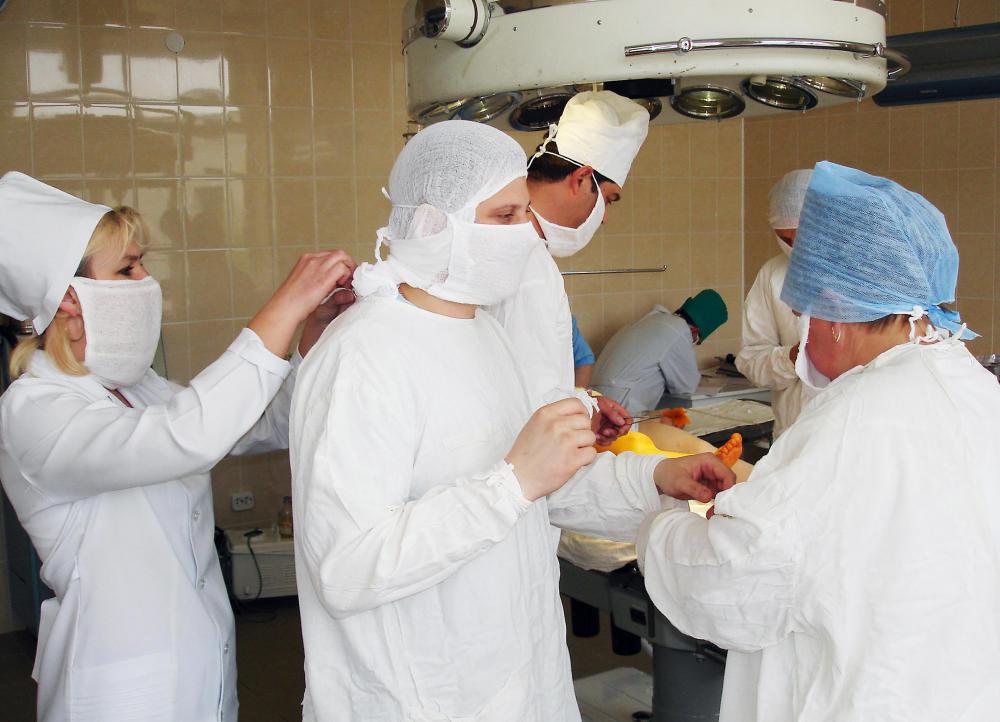At TheHealthBoard, we're committed to delivering accurate, trustworthy information. Our expert-authored content is rigorously fact-checked and sourced from credible authorities. Discover how we uphold the highest standards in providing you with reliable knowledge.
What is Scaphocephaly?
Scaphocephaly is a deformity of the skull in which the skull acquires an elongated appearance. This condition can be caused by a condition known as craniosynostosis, in which the sutures of the skull close too early, or it can be positional, meaning that the deformity was caused by pressure put on the skull. Treatment for scaphocephaly varies, depending on the severity and the cause. If intervention is provided early, a patient's skull will develop normally, creating a normal head shape.
The infant skull is a very interesting example of natural engineering. When babies are born, their skulls are not solid like those of adults, but rather divided into a series of plates separated by lines known as “sutures.” Over time, the brain grows and the plates expand, and as the rate of growth slows, the futures start to fill in and fuse, until the skull becomes solid. This design gives the head room to grow over time.

In craniosynostosis, one of more of the sutures starts to fuse too early. Because the brain is still growing, the skull starts to develop a deformed shape as the brain pushes out where it can. Scaphocephaly is one of the most common conditions caused by craniosynostosis. In this condition, the sagittal suture of the skull closes too soon. The treatment is surgery to pull the suture apart again so that the skull will develop more evenly.

Positional scaphocephaly is classically caused by the pressure put on an infant's skull in the crib. If babies spend too much time in one position, their skulls can become deformed. This condition is treated by wearing a helmet or headband which redistributes the pressure, training the skull back into shape. If the scaphocephaly is in its early stages, parents may simply be encouraged to vary the child's position in the crib, using padding to reduce pressure, to see if that addresses the issue.

This condition is usually identified by a pediatrician within a child's first year of life. Doctors look for signs of cranial deformities by observing a child's development, and taking measurements to see if the dimensions of the head fall within expected norms. If signs of scaphocephaly are observed, testing may be recommended to determine the cause, so that an appropriate treatment plan can be developed. Treating the condition is important not just for aesthetic reasons, but because scaphocephaly can interfere with brain development, causing neurological problems later in life.
AS FEATURED ON:
AS FEATURED ON:















Discussion Comments
I have a scaphocephalitic skull. I was born 50 years ago before the correcting techniques were commonly used.
May I say to any worried parents out there that from my experience scaphocephaly does not affect one's life chances. I hold an MBA and I work as a health statistician. I have authored a book and regularly give public talks. I am happily married, have an above average income and I am a father to a beautiful boy who has a "normal" shaped skull (although to me my skull is normally shaped).
The effects of this condition are purely cosmetic and from my experience will have no influence on your child's academic or professional attainment.
Which neurological problems does it cause later in life?
My son had a surgery at the age of six months. A scaphocephaly was diagnosed at the age of two months. The shape of his head changed dramatically after the surgery. I want to reassure scared parents. The surgery is very easy. What i want to know is the following: My four year daughter is not suffering from craniostenosis. Is it possible to have a child with scaphocephaly and the other child not having it?
Post your comments